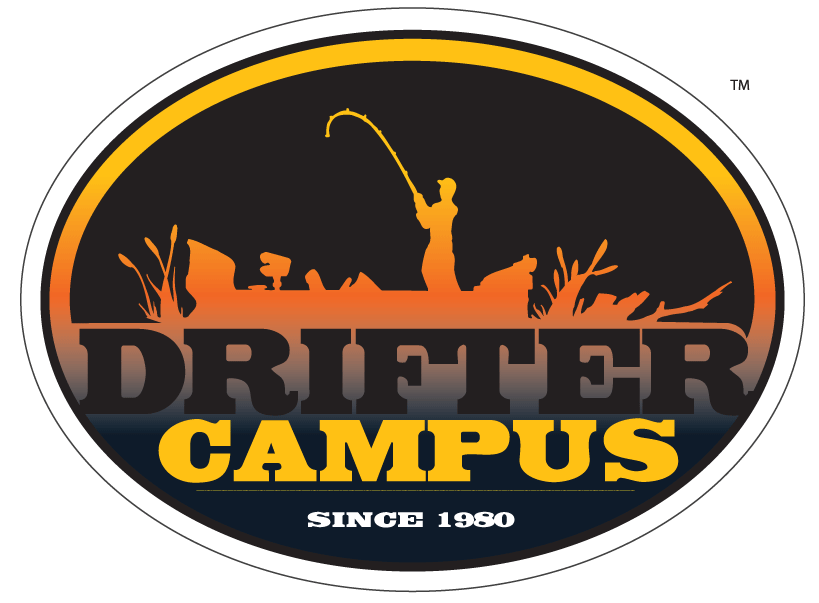Hi folks. In my opinion muskies, like whitetails, are creatures of edges. However, I wonder how many of us addicts think about edges and their importance to our success. Until recently I really hadn’t considered combining edges as a ‘thought process’ I should be concerned about when on the water. When deer hunting I would never think about throwing a portable stand on my back, heading into the woods, and then setting up to hunt anywhere that looked good. Nope, in that situation I’d definitely think about and look for edges where various sorts of deer ‘structure’ came together-only then would I set up and hunt. Is hunting for muskies different? NO! Combining edges is important to success in both situations.
After reading an article some years ago by Gord Pyzer in In-Fisherman magazine, I proved this to myself by going back and reconstructing the edges I could identify in the situations where I caught my biggest muskies ever and also in those situations where I saw that small group of legendary beasts I’ve been fortunate to see over the years. Eye opening indeed! I had known these spots had the ‘right stuff’ (as my friend Doug Johnson would say) but they had more ‘stuff’ or more ‘stuff’ was involved at the time than I had realized before.
EXAMPLES. The biggest I’ve caught casting had at least the following edges combined: dawn; a rock bar with a cut or saddle in it; boulders with a clump or two of weeds on the saddle edges; wind current flowing through the cut; bait stacked in the cut; and sunrise-moonset coinciding. Surprise, surprise-I caught a big muskie.
The biggest trolling ever had at least the following edges involved: a classic rock point but again it had a few big boulders near the tip-an edge within an edge; significant wind blowing across it then and the day before; a wind current eddy on the downside; baitfish everywhere; and a big blow out type storm about 2 hours away. Surprise, surprise….
The biggest I’ve ever seen? Well, that would be a fish story and even I don’t fish in those conditions anymore so I’ll quit but I’m sure you see my point-combining as many edges as possible can make your day (life) so I submit it deserves your thought and consideration.
Note that in the examples above I said “at least” the following edges were involved. I said that because I suspect there are often edges involved we are unaware of for various reasons. Maybe it’s those mysterious ‘cold currents’ you occasionally feel when wading or swimming; a thermal line we are incapable of identifying; or something else known only to the musky gods.
So what edges am I suggesting you combine? Any and all you can ID and use. I’ll briefly discuss a few.
Traditional Edges. These would be the edges of your classical structural elements such as weeds, rocks, sand, stumps, reefs, saddles, points, breaklines, etc. Keep in mind there are edges within these edges. For instance a thick patch of weeds within a weed bed is an edge; where coontail meets cabbage is an edge; where rubble meets boulders is an edge; and so on.
Environmental edges.
These are often the keys that can make your day yet ones we think little about. Consider:
1.Temperature/Oxygen.
Important edges yet hard to ID and use. Temp gauges, electronics and so on are improving so these will become more meaningly in time. Just recognize these edges are important and try to use them whenever you can. All species have comfort zones and if, for instance, you know and can locate the preferred preys comfort zone in a particular lake, guess who’s likely coming there for dinner? In fact, at times like in mid-summer, preferred prey may be confined to such a narrow strip in the water column that trollers and open water casters have an extreme advantage if they can ID that comfort zone.
2.Weather.
A huge edge to consider. Get in front of fronts! Not just for an hour or two-how about for 12 hours or so in front of a major front? The weather channel, your barometer or radio, observing wildlife, whatever way you ID this-don’t miss them. Combine this approaching edge with others and win.
On the flip side, fronts are two-edged swords (pun intended). Postfrontal conditions can be miserable so now what? How about combining a few key edges to deal with this? Heavy weeds-deeper rocks-current-dawn and particularly dusk are edges I often turn to. Combine a few of these and postfrontal conditions can be overcome.
3.Solar/Lunar.
New moon, dark moon, majors, minors, a huge topic with opinions all over the map but, hey, forces that affect ocean tides ought to be considered so why not be on a multiple edged spot during key periods or times? Common sense would seem to dictate that much.
4.Baitfish.
Bait is ‘structure’. Hard to ID in the shallows but, for certain, if you’re trolling or ‘open water’ fishing it’s potentially the biggest edge of all so…
5.The Surface.
Often called the ‘Ultimate Edge’, a place where two worlds collide. Where temp, oxygen, wind, noise have the greatest variations and consequences. Combine this edge with others and you may be smiling for a long time.
6.The Bottom.
Another key edge? Sure, but once beyond the breakline the actual bottom in many waters becomes a near fishless sterile zone and the important ‘bottom’ becomes the thermocline or what Gord Pyzer calls the twilite zone. We all know about the thermocline but consider the Twilite zone carefully. What is it? It’s the zone where photosynthesis takes place. The zone where the meaningful food chain for our purposes lives. Why fish deeper than that? It makes no sense to fish deeper and I no longer waste my time doing it. Furthermore, this zone is easily determined with reasonable accuracy. It’s twice the secchi disc reading depth on that water. If you don’t know that depth, lower a white object (anchor) til it disappears, measure that depth, double it and that’s the zone. If measuring in wind, bloom or you are concerned about visibility, add a couple extra feet if you wish. That’s the bottom, the edge, I believe you ought to be concerned with. Studies suggest pike utilize this shadowy ‘bottom’ as a spot to ambush prey silhouetted above. No doubt in my mind muskies do as well. Reconstructing my open water success, whether casting or trolling, has convinced me this is a key edge for clear or trout water and I suspect nearly any water. Remember, the ‘open water’ thing isn’t random to the fish, species don’t survive by random movement. Nope, fish ‘out there’ are related to structure, it’s just that we struggle to recognize that structure. This edge is one key.
7.Dawn/Dusk.
What can I say about these low light edges except they are biggies. Even on your toughest days these edges combined with a couple others give you your best shot-maybe your only shot-at success. Use them-the rest of the animal/fish world does.
I would like to say a little more about dawn which seems to get a bum rap from muskie people at times. (note dawn doesn’t get that rap from other predator hunters like the walleye or bass people.) Dawn is my favorite time for big bucks and often for big muskies as well. Those that rap it, often don’t really fish it-good friends of mine included. Furthermore when some do try it, they try the wrong spots-such as the weedbed they put the fish to bed on. One factor involved is oxygen, levels of which in the water are at their lowest at dawn. (photosynthesis can’t take place in the dark) Think of areas where oxygen levels are better. Structure adjacent to shallow weedy bays; the surface; more open water areas (reefs); walls; areas mixed by current (wind induced or natural). Oh heck, upon reflection stay in bed, leave dawn for me.:-)
8.Wind/Wind Current/Current.
These 3 edges are very important to me-and I’ve felt that way for many years. They are involved in some form in many of the big muskie catches I’ve made. There really is no such thing as ‘calm’ water-not even in your bathtub-so the more you learn about these edges, and the more you use them, the more successful you’ll be. Promise.
Well folks I’ll quit but urge you to really ponder this subject and focus more on edges-give yourself an edge. One often hears that 90% of the water is sterile and the fish are in the other 10%. True or not on any given body of water, its clear to me that remaining 10% is comprised of edges where most of the fish are.
For more info on the environmental edges discussed here, see the ‘Research Center’ in this website.
Good fishing!
Dick







